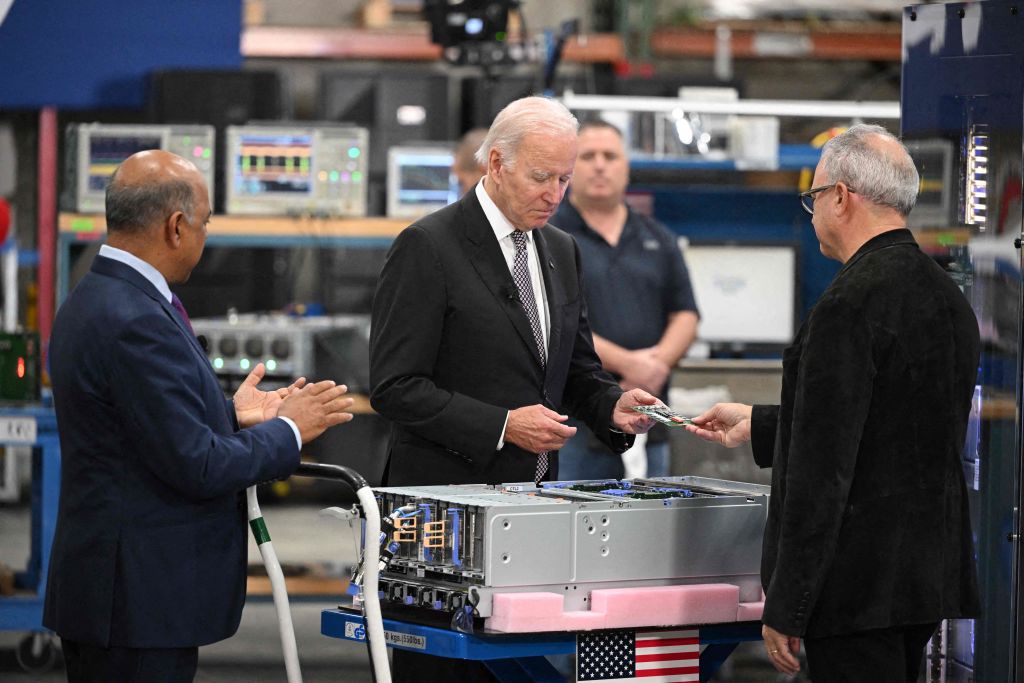
Last month, the White House quietly released the United States government national standards strategy for critical and emerging technology, a new whole-of-US-government approach to addressing China’s expanding influence in international technology standards-setting bodies.
Technology standards have become powerful instruments of geostrategic influence in recent years, as countries have recognised that the rules and specifications governing technologies impact the balance of power in today’s interconnected world. Technology standards—which determine how devices, systems and networks operate and interact with each other—influence a nation’s economic competitiveness, national security and military power The building blocks of the modern world, tech standards also have significant implications for the protection of human rights and values.
The US has over recent years become increasingly aware of the strategic competition underway to reshape the rules and standards governing the development and use of technology, and the risks of creeping digital authoritarianism in standards-setting bodies. However, formulating a meaningful response has proven challenging given standards-setting bodies remain primarily industry led. The strategy, however, signifies a significant step forward in the US’s efforts to navigate growing strategic competition.
China has taken a multi-faceted approach to exerting influence over international technology standards-setting bodies, by strategically aligning its technology standards agenda with its geopolitical and economic interests. This approach has included mandating that domestic enterprises support the state’s standards goals, funding research into standards development and pushing for standards that promote authoritarianism through enhanced government control over digital technologies.
China’s proactive engagement at scale, including deploying large government delegations and inundating standards bodies with proposals, has also met with some success. These efforts serve not only to bolster China’s economic position by shaping standards to disproportionately favour Chinese industry—undermining principles of fair competition and technical integrity—but also seek to reshape global technological norms to align with its own values and priorities by compromising human rights and privacy on a global scale.
The overarching goal of the new US strategy is for the US to remain a leader in standards development and ensure technology standards are developed in a way that safeguards American consumers, protects US national security interests, and promotes US economic competitiveness. The strategy focuses on four key objectives to achieve these goals: investment in research and development, encouraging private sector and academic participation, increased education and training, and integrity of standards based on technical merit promoted through fair processes.
There’s much to like in the US standards strategy. In contrast to the Chinese approach, it emphasises transparent, market-driven and merit-based standards that protect individual liberties while promoting innovation and economic growth.
However, a key challenge for the US will be to balance enhanced government engagement in standards setting bodies without adopting the Chinese government approach it opposes. The strategy tries to strike this balance by prioritising funding allocations towards research and encouraging increased private sector and academic involvement, while limiting enhanced US government engagement when it comes to shaping standards relevant to national security, or where significant national interests are at stake.
Of course this will need to be managed carefully, but it’s good to see the US openly outline the circumstances in which increased government participation is warranted.
The US has a number of other challenges ahead. One of the primary hurdles is the sheer number of standards-setting bodies scattered across the globe. The fragmented and voluntary nature of these bodies makes it burdensome and costly for the private sector to participate. The strategy acknowledges this challenge and highlights the need to streamline processes, reduce barriers to participation, and provide incentives for US industry involvement to ensure comprehensive representation and influence in standards development. However, it remains to be seen how exactly the US intends to do this.
The US must also address the genuine and growing support for Chinese standards. Many countries favour Chinese proposals to enhance government control over digital technologies, given the difficulties of regulating technology and their own lack of industry participation in standards-setting bodies.
Another challenge is China’s use of de facto standards established through memorandums of understanding and technology exports. China leverages its dominance in certain industries, such as telecommunications, by promoting its own technical specifications. Through strategic partnerships and technology exports, China effectively extends its influence beyond formal standards bodies, establishing de facto standards that align with its interests and increase its market share. The US strategy is focused on formal standards-setting bodies—the US will need to focus bilateral and multilateral diplomatic efforts to raise awareness of how exports and other projects are embedding Chinese standards on the ground in real time.
The successful implementation of the US national standards strategy will require a collective effort from government, industry, civil society and international partners. Fortunately, it looks like this last part is well in train with the recent Quad Leaders’ Summit and G7 Leaders’ Summit in Tokyo setting out like-minded commitments for a fair and transparent rules-based global technology standards system.

